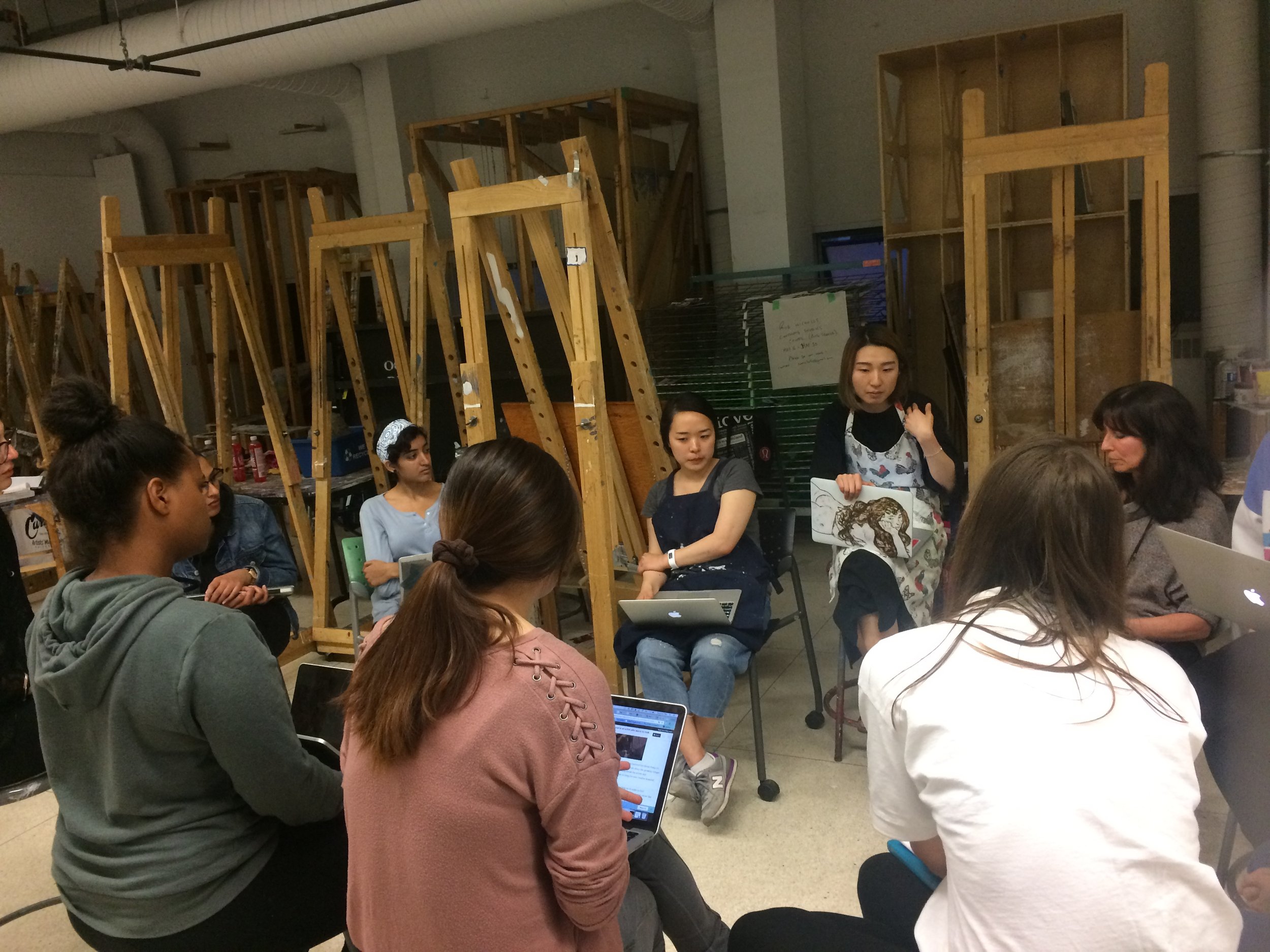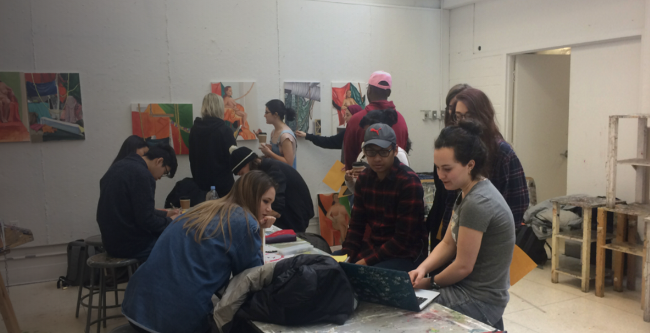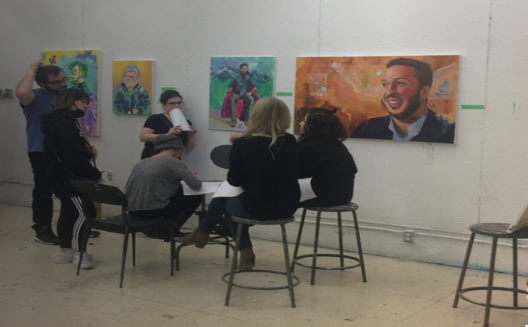Teaching Philosophy and Background
Ilene Sova has extensive teaching experience for all age groups and is considered to be an expert in the fields of progressive art education pedagogies and frameworks of cultural pluralism in the arts classroom. Ilene is an instructor at OCAD University in the Department of Painting and Drawing and Continuing Studies. She has previously taught English in the department of Liberal Studies at OCADU University and each summer teaches the English for Art and Design programme for incoming International Students. Sova has also run her own private atelier at Walnut Studios for ten years teaching both adult learners and youth. Other institutions that Ilene has taught at include; Harbourfront Centre, Art Gallery of Ontario, Toronto School of Art and the International Language Academy of Canada. Ilene is also the founder of Blank Canvases, a contemporary art programme for elementary students that uses the inspiration of local artists to engage children to use their creativity to their utmost capacity. This programme has a large reach with official partnerships with the TDSB and TCDSB. The success of the pedagogy has resulted in both school boards hiring Blank Canvases to do teacher training for the professional development of classroom teachers.






Teaching Philosophy
“Education either functions as an instrument which is used to facilitate integration of the younger generation into the logic of the present system and bring about conformity or it becomes the practice of freedom, the means by which men and women deal critically and creatively with reality and discover how to participate in the transformation of their world.”
― Paulo Freire, Pedagogy of the Oppressed
As an Artist Educator, my teaching philosophy is student-centred and non-hierarchical in its approach. I believe firmly in the methodology of the teacher acting as a facilitator of the educational outcomes of the course. I aim to instil confidence in my students through this anti-colonial approach to instruction. In this way, they can explore and create in their research and image making, while I act as a guide, rather than a vessel, of the “correct” knowledge.
Further to this, I see the studio and the students in it as a community whose strength is integral to student success. At the start of each course, I begin this process by handing out a survey that asks students critical questions of inquiry such as;as “What are your personal learning goals for this course?” and “Describe what a beneficial learning environment is for you?” This allows me to receive a profile of their expectations and cater their course instruction in a student centred model. To build relationships in the studio community, I begin by putting them into group learning pods to discuss the answers to their questionnaires. Throughout each class, I continue to create facilitated opportunities for the students to meet with one another. While in their groups they discuss their artwork and key conceptual ideas through anchored mini-critiques.
Regarding curriculum, I work to provide the integral technical skills at the beginning of the course. For the second half of the course, the students work on projects of their own design. I do this so they can apply the painting skills they learn in a self-directed way. As a facilitator, I support their art production and research by giving them feedback and resources to guide them toward optimal success. Process before the product is a very important aspect of my teaching philosophy. I aim to have my students learn through the action that happens in the process of creating work. They do this through problem-solving, experimentation and individual exploration.
Lastly, I believe that the artist studio cannot exist in a vacuum. Artists should, therefore, be led through the action of continually observing, sharing, and writing about a pluralistic view on contemporary art that can inspire them and inform their image-making. I work towards this end by giving lectures each class on artists that are diverse and inclusive in their identities and professional practice. In this area of my curriculum planning, representation is a key goal of my examples and lectures. Showing examples of artists that reflect the stories and narratives of all our students are of utmost importance. One of the ways I have consolidated this is through an online ‘digital textbook’ that I give my students for inspiration and research outside of class.
Overall, I see my primary goal as an Artist Educator to instil in students the importance of reasoning and understanding, and the rationale behind their role as image-makers in the socially-conscious, contemporary world.
Testimonials
“Thanks so much for all your awesomeness and amazing teaching! You’re seriously the best art teacher I’ve ever had! I’m really pleased with the progress so far and can’t wait to take the next class.”
— Former Student Introduction to Portrait Painting
“I thought Ilene was superb. She was organized, structured, and methodical. I learned so much from her. Ilene demystified colour for me! I was able to rekindle a passion for art I used to have as a teenager but fell by the wayside”
— Former Student Painting and Drawing What See
“Ilene’s method has everyone painting within the first half hour of the first class and you never stop. It is a focused and practical approach that makes painting accessible to everyone regardless of experience or skill level. She provides support while allowing each student time to explore and discover things on their own which, though frightening at first is so very rewarding”
—Former Students Beginner Painting
